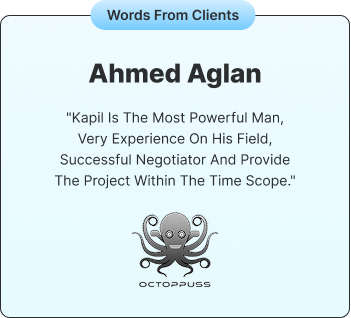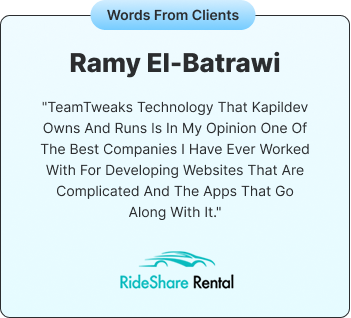Porter app is revolutionizing logistics and moving services, offering a seamless solution for transporting goods. Designed for both individuals and businesses, the Porter app addresses logistical challenges with a user-friendly platform that ensures efficiency and reliability.
The need for dependable logistics services is crucial for timely product delivery and hassle-free moves. Traditional methods often result in delays and complications. Porter app overcomes these issues with its innovative approach, providing a range of features that enhance the user experience.
Key features include real-time tracking, multiple vehicle options, secure payment gateways, and 24/7 customer support. These elements ensure users have complete control over their logistics needs, offering transparency, reliability, and convenience. By leveraging technology, Porter app stands out as an essential tool in the logistics industry, delivering exceptional service and peace of mind
How Does It Work?
Step by Step Guide on Using the Porter App
- Download and Register: Start by downloading the Porter app from the App Store or Google Play. Register with your mobile number and complete the verification process.
- Enter Details: Input your pick-up and drop-off locations. Choose the type of goods you need to transport and provide any additional instructions.
- Select Vehicle: Choose from a range of vehicles depending on the size and nature of your items. Options typically include mini trucks, tempos, and larger vehicles.
- Schedule and Confirm: Schedule your transport for immediate or future pickup. Review the details and confirm your booking.
- Track in Real-Time: Once your booking is confirmed, track your vehicle in real-time via the app. You’ll receive updates on the driver’s location and estimated time of arrival.
- Delivery and Payment: Upon delivery, confirm the completion within the app and make a secure payment through various options like credit/debit cards, UPI, or digital wallets.
User Interface and User Experience
However Porter’s app boasts a clean, intuitive interface that simplifies the logistics process. Users are guided through each step with clear prompts and easy navigation. The app’s design focuses on efficiency and user-friendliness, ensuring a seamless experience even for first-time users.
Booking Process and Real Time Tracking
Booking a service on Porter app is straightforward. After entering your details and selecting a vehicle, you can choose to book immediately or schedule for later. Once the booking is confirmed, real-time tracking allows you to monitor the vehicle’s journey. This feature provides transparency and helps manage expectations regarding delivery times.
Payment Options and Security Measures
Porter app offers multiple secure payment options to cater to user preferences. Furthermore, Payments can be made using credit/debit cards, UPI, digital wallets, and net banking. Moreover the Porter app employs robust security measures to protect user data and ensure safe transactions. Additionally, users can view detailed invoices and transaction histories within the app for transparency and record-keeping.
By combining an easy-to-use interface with real-time tracking and secure payment options, Porter app ensures a hassle-free experience for all logistics needs.
Logistics Apps Like Porter – Future Predictions and Projections
Trends in the Logistics and Moving Industry
The logistics and moving industry is rapidly evolving, driven by increased consumer demand for convenience and efficiency. One notable trend is the growing preference for on-demand logistics services, which provide flexibility and quick response times. Additionally, the industry is seeing a rise in the use of electric and autonomous vehicles, aiming to reduce carbon footprints and enhance operational efficiency. Another significant trend is the adoption of multi-modal transportation solutions, integrating various forms of transport to optimize routes and reduce costs.
Technological Advancements Influencing Logistics Apps
Technological advancements are at the forefront of transforming logistics apps like Porter app. Artificial Intelligence (AI) and Machine Learning (ML) are being integrated to optimize route planning and predict potential delays, thereby enhancing delivery efficiency. The Internet of Things (IoT) is another game changer, enabling real-time tracking of goods and vehicles through connected sensors. Blockchain technology is also making inroads, offering secure and transparent transaction records that can prevent fraud and ensure accountability. Additionally, advancements in mobile technology are improving user interfaces and making Mobile apps more accessible and user-friendly.
Market Growth and Future Projections for Logistics Apps
The market for logistics apps is expected to experience substantial growth in the coming years. According to industry reports, the global logistics market is projected to reach $12.68 trillion by 2023, driven by the e-commerce boom and increasing demand for efficient delivery solutions. Consequently Logistics apps like Porter are set to benefit from this growth, with the market for these apps expected to expand at a significant CAGR. Factors such as urbanization, the rise of smart cities, and increasing smartphone penetration are further fueling this growth. The need for seamless, integrated logistics solutions will likely propel the demand for advanced logistics apps.
Potential Challenges and Opportunities
Despite the promising outlook, logistics apps face several challenges. One major challenge is the regulatory landscape, which can vary significantly across different regions and affect operations. Additionally, the high initial cost of technology integration, such as IoT devices and AI systems, can be a barrier for smaller companies. Data security and privacy concerns also pose significant risks, as logistics apps handle sensitive user information.
On the opportunity side, the increasing adoption of green logistics presents a significant growth area. Companies that invest in sustainable practices and technologies will likely see increased demand from environmentally conscious consumers. Additionally, there is a growing opportunity in the B2B segment, where businesses seek reliable logistics solutions to streamline their supply chains. Expanding into emerging markets, where logistical infrastructure is developing rapidly, also offers substantial growth potential. Finally, the continuous evolution of AI and ML technologies presents opportunities for further enhancing the efficiency and capabilities of logistics apps.
Key Features to Consider Logistics App like Porter App Development
User Friendly Interface and Seamless Navigation
A user-friendly interface is crucial for the success of logistics apps like Porter. It ensures that users can easily navigate the app, regardless of their technical proficiency. The design should be intuitive, with clear menus and straightforward booking processes. Icons and labels should be easily understandable, and the overall aesthetic should be clean and uncluttered. Seamless navigation helps reduce the time users spend on the app, making the process of booking logistics services quick and efficient. This enhances user satisfaction and encourages repeat usage.
Real Time Tracking and Notifications
Real-time tracking is a vital feature that provides transparency and reliability. It allows users to monitor the progress of their shipment or transportation in real-time, offering peace of mind and the ability to plan accordingly. Notifications further enhance this feature by providing timely updates about the status of the delivery, such as dispatch confirmation, estimated time of arrival, and delivery completion. This level of transparency builds trust and ensures that users are always informed about their logistics process.
Multiple Vehicle Options for Different Needs
A successful logistics app must cater to a variety of transportation needs by offering multiple vehicle options. For instance, From small vans for personal moves to larger trucks for commercial deliveries, the app should provide a range of vehicles to suit different cargo sizes and types. This flexibility allows users to choose the most appropriate vehicle for their specific needs, ensuring cost-effectiveness and efficiency. Additionally, providing detailed information about each vehicle option, such as capacity and dimensions, helps users make informed decisions.
Secure and Diverse Payment Gateways
Security is paramount when handling transactions, and logistics apps must incorporate robust payment gateways to protect user data. Offering diverse payment options, including credit/debit cards, UPI, digital wallets, and net banking, caters to different user preferences and enhances convenience. Moreover, Advanced encryption methods and secure socket layer (SSL) technology should be employed to ensure that all transactions are safe from potential threats. As a result, providing users with a variety of secure payment methods builds trust and encourages more frequent use of the app.
Customer Support and Feedback Mechanisms
Effective customer support is essential for addressing user queries and resolving issues promptly. To that end an in-app chat feature, along with a dedicated customer support helpline, ensures that users can easily reach out for assistance. Additionally, integrating feedback mechanisms allows users to rate their experience and provide suggestions for improvement. This feedback is invaluable for continuously refining the app and enhancing user satisfaction. Furthermore a responsive customer support system and active engagement with user feedback demonstrate a commitment to providing excellent service.
Integration with Other Services
Integrating additional services, such as insurance and packing materials, can significantly enhance the value proposition of a logistics app. Offering insurance options provides users with peace of mind by protecting their goods against potential damage or loss during transit. Similarly, providing access to packing materials and services can simplify the moving process for users. These integrations create a one-stop solution for all logistics needs, making the app more attractive and comprehensive.
Scalability and Performance Optimization
As the user base grows, the app must be able to handle increased traffic without compromising performance. In essence, scalability ensures that the app can efficiently manage more users and transactions as demand increases. This, in turn, involves optimizing the app’s backend infrastructure and ensuring that it can scale horizontally and vertically. Performance optimization is equally important, focusing on minimizing load times, preventing crashes, and ensuring smooth functionality. Regular updates and maintenance are essential to keep the app running efficiently and to incorporate new features that enhance user experience.
What is The Need for Apps Like Porter?
Growing Demand for Reliable and Efficient Logistics Services
The demand for reliable and efficient logistics services has surged in recent years, driven by the rapid growth of e-commerce, urbanization, and global trade. Consequently, businesses and consumers alike require timely and dependable transportation solutions to meet their logistics needs. In contrast, traditional logistics services often fall short in terms of reliability, speed, and transparency. Apps like Porter address these shortcomings by offering a platform that ensures consistent, prompt, and trackable logistics services. Therefore, growing demand for reliability and efficiency in logistics is a key reason for the rise of such Mobile apps, which streamline operations and enhance service quality.
The Convenience of On-Demand Moving and Transportation
One of the primary advantages of apps like Porter is the convenience they offer. On-demand logistics services allow users to book transportation whenever they need it, without the hassle of pre-scheduling days or weeks in advance. This flexibility is particularly beneficial for individuals and businesses with urgent or unpredictable transportation needs. Whether it’s a last-minute move, an unexpected delivery, or the need to transport goods on a tight schedule, on-demand logistics apps provide a seamless solution. The ability to quickly arrange transportation through a few taps on a smartphone significantly enhances user convenience.
Challenges Faced Without Such Apps
Without apps like Porter, logistics and moving services can be cumbersome and inefficient. Traditional methods often involve lengthy phone calls, unclear pricing, and uncertain delivery times. Users may struggle with coordinating multiple service providers, leading to delays and increased costs. Additionally, the lack of real-time tracking and updates can cause anxiety and frustration, as users remain in the dark about the status of their shipments. These challenges highlight the inefficiencies and stress associated with traditional logistics services, underscoring the need for innovative solutions like Porter app that streamline the process and provide transparency.
Benefits to Businesses and Individual Users

For Businesses
- Cost Efficiency: Businesses can reduce logistics costs by leveraging the competitive pricing and flexible vehicle options offered by apps like Porter.
- Enhanced Reliability: Real-time tracking and timely updates ensure that businesses can rely on these services for critical deliveries, Consequently, this reduces the risk of delays and lost shipments.
- Scalability: Logistics apps can easily scale to meet the changing needs of businesses, whether they are expanding operations or handling seasonal fluctuations in demand.
- Improved Customer Service: By using efficient logistics services, businesses can enhance their customer service, ensuring timely deliveries and boosting customer satisfaction.
For Individual Users
- Convenience: Individuals benefit from the ease of booking and managing transportation services directly from their smartphones, saving time and effort.
- Transparency: Real-time tracking and updates provide peace of mind, as users can monitor the progress of their shipments and plan accordingly.
- Affordability: Competitive pricing and a variety of vehicle options allow individuals to choose cost-effective solutions that suit their budget and needs.
- Flexibility: On-demand app delivery services cater to urgent and unpredictable needs, offering a flexible solution for last-minute moves and deliveries.
How Logistic Apps Like Porter Are Advantageous to The Users?
Time and Cost Efficiency
Logistic apps like Porter significantly enhance time and cost efficiency for users. Traditional logistics services often involve lengthy processes and high costs due to manual coordination, lack of transparency, and inefficient routing. Porter streamlines these processes by automating bookings, providing instant quotes, and optimizing routes using advanced algorithms. As a result this automation reduces administrative overhead and minimizes delays, ensuring that goods are transported quickly and at a lower cost. Users can compare prices, select the most cost-effective options, and benefit from competitive rates, resulting in substantial savings in both time and money.
Enhanced Safety and Security for Goods
Safety and security of goods during transportation are paramount concerns for both businesses and individuals. Logistic apps like Porter address these concerns by implementing robust safety measures. Features such as driver verification, vehicle tracking, and secure handling protocols ensure that goods are transported safely. Real-time tracking allows users to monitor their shipments throughout the journey, reducing the risk of theft or loss. Additionally, insurance options provide an extra layer of protection, giving users peace of mind that their valuable items are covered in case of unforeseen incidents.
Improved Customer Experience
Porter enhances the overall customer experience by offering a user-friendly interface, seamless booking process, and responsive customer support. Additionally, the app is designed to be intuitive, allowing users to easily navigate through different options and complete their bookings with minimal effort. Real-time tracking and notifications keep users informed about their shipment status, reducing anxiety and uncertainty. Moreover, customer support is readily available through multiple channels, ensuring that any issues or queries are promptly addressed. Ultimately, this focus on user satisfaction leads to a more positive and hassle-free experience.
Transparency and Real-Time Updates
Transparency is a key benefit of logistic apps like Porter. Traditional logistics services often lack clear communication, leaving users unsure about the status and location of their shipments. Porter resolves this issue by providing real-time updates and detailed tracking information. Users can monitor the progress of their deliveries on their smartphones, receiving notifications at key stages such as pickup, transit, and delivery. This level of transparency builds trust and allows users to plan their activities more effectively, knowing exactly when to expect their goods.
Environmental Benefits Through Optimized Routes and Vehicle Usage
Environmental sustainability is becoming progressively crucial in the logistics industry. In this context, logistic apps like Porter contribute to reducing the environmental impact of transportation through optimized routes and efficient vehicle usage. Furthermore by leveraging advanced algorithms and real-time data, these apps plan the most efficient routes, minimizing fuel consumption and reducing carbon emissions. Additionally, the ability to choose appropriate vehicle sizes for different loads ensures that vehicles are used to their full capacity, further reducing unnecessary trips and emissions. This eco-friendly approach aligns with the growing demand for sustainable practices and helps users reduce their carbon footprint.
How To Build a Movers and Packers App Like Porter
Initial Market Research and Target Audience Analysis
Before developing a movers and packers app like Porter, conducting thorough market research is crucial. Understand the current logistics landscape, identify key players, and analyze their strengths and weaknesses. Additionally, Assess the demand for moving and packing services in different regions and identify gaps in the market that your app can fill. Target audience analysis is equally important; define your potential users, including their demographics, preferences, and pain points. This research helps in creating a value proposition that meets the needs of your target audience and sets your app apart from competitors.
Key Features and Functionalities to Include
- User Registration and Profile Management: Allow users to create and manage their profiles easily.
- Booking and Scheduling: Enable users to book services and schedule pickups and deliveries.
- Real-Time Tracking: Provide real-time GPS tracking for shipments.
- Multiple Vehicle Options: Offer a range of vehicle types to accommodate different cargo sizes.
- Secure Payment Gateways: Integrate various payment methods such as credit/debit cards, digital wallets, and UPI.
- Notifications and Alerts: Send notifications for booking confirmations, vehicle arrivals, and delivery updates.
- Customer Support: Include in-app chat and helpline support.
- Ratings and Feedback: Allow users to rate services and provide feedback.
- Additional Services: Integrate options for insurance, packing materials, and additional manpower if needed.
Choosing the Right Technology Stack
Selecting the right technology stack is vital for the performance and scalability of your app. Consider the following technologies:
- Frontend: Employ React Native or Flutter for cross-platform development.
- Backend: Node.js or Django for server-side logic.
- Database: MongoDB or PostgreSQL for data management.
- Real-Time Tracking: Utilize Google Maps API or Mapbox for location services.
- Payment Gateway: Stripe, PayPal, or Razorpay for secure transactions.
- Push Notifications: Firebase Cloud Messaging (FCM) for sending alerts and notifications.
UI/UX Design Considerations
The user interface (UI) and user experience (UX) design play a crucial role in user retention and satisfaction. Therefore, focus on creating an intuitive and visually appealing design. Key considerations include:
- Simplicity: Ensure the design is clean and easy to navigate.
- Consistency:: Ensure a uniform design language throughout the app.
- Accessibility: Design with accessibility in mind, ensuring the app is usable by people with disabilities.
- Responsiveness: Ensure the app works seamlessly on various devices and screen sizes.
- User Feedback: Incorporate user feedback mechanisms to continuously improve the design.
Development Process: Stages from Planning to Deployment
- Planning: Define the project scope, timeline, and budget. Collect requirements and develop a comprehensive project plan.
- Design: Develop wireframes and prototypes. Finalize the UI/UX design based on user feedback and best practices.
- Development: Begin coding the frontend and backend. Implement key features and functionalities.
- Integration: Integrate third-party services such as payment gateways, GPS tracking, and push notifications.
- Testing:Perform comprehensive testing, encompassing unit testing, integration testing, and user acceptance testing.
- Deployment: Deploy the app to Google Play and Apple App Store and set up the backend on a reliable server.
Testing and Quality Assurance
Testing is a critical phase in app development to ensure a bug-free and smooth user experience. Key testing stages include:
- Unit Testing: Test individual components for functionality.
- Integration Testing:Integration Testing: Verify that all components function together seamlessly.
- System Testing: Test the entire system for performance, security, and reliability.
- User Acceptance Testing (UAT): Involve real users to validate the app’s functionality and usability.
- Beta Testing: Release the app to a small group of users to identify any remaining issues before the full launch.
Launch Strategies and Post-Launch Maintenance
- Pre-Launch Marketing: Create buzz around the app with teaser campaigns, social media promotions, and email newsletters.
- Launch: Announce the app’s availability on multiple platforms. App Store Optimization apply ASO techniques to boost app visibility.
- Post-Launch Monitoring: Continuously monitor app performance and user feedback. Use analytics to track usage patterns and identify areas for improvement.
- Regular Updates: Provide frequent updates to resolve bugs, enhance performance, and introduce new features.
- Customer Support: Maintain a responsive customer support system to address user queries and issues promptly.
- Community Engagement: Engage with users through social media, forums, and other channels to build a loyal community.
Cost Estimation to Build an App Like Porter
Factors Influencing the Cost of App Development
The cost of developing an app like Porter depends on several factors, including the app’s complexity, features, platform like iOS, Android, or Hybrid development processes, such as Flutter app development, have varying cost implications. Developing hybrid apps that run on multiple platforms can be more cost-effective, though there may be compromises in performance and customization . And the development team’s expertise and location. Additionally, factors include the integration of third-party services, design requirements, and the need for ongoing maintenance and updates.
Estimated Cost Breakdown
- Design and UI/UX
- Wireframing and Prototyping: Creating initial wireframes and interactive prototypes to map out the app’s structure and flow.
- Visual Design: Designing the app’s visual elements, including color schemes, icons, and overall aesthetics.
- Cost: $5,000 – $15,000
- Note: A well-designed UI/UX enhances user experience, making it crucial for the app’s success.
- Development (Front-end and Back-end)
- Front-end Development: Coding the user interface and ensuring responsiveness across different devices.
- Back-end Development: Setting up the server, database, and application logic to support the app’s functionality.
- Cost: $30,000 – $70,000
- Note: The cost varies depending on the app’s complexity and the number of features included.
- Third-Party Integrations
- Payment Gateways: Integrating secure payment options such as Stripe, PayPal, or Razorpay.
- Real-Time Tracking: Incorporating GPS services like Google Maps API or Mapbox.
- Push Notifications: Setting up Firebase Cloud Messaging (FCM) for real-time alerts and updates.
- Cost: $5,000 – $10,000
- Note: Integrations enhance the app’s functionality and user experience, but they also add to the overall cost.
- Testing and Quality Assurance
- Unit Testing: Verifying the functionality of individual components.
- Integration Testing: Ensuring that all components work together seamlessly.
- System Testing: Testing the complete system for performance, security, and reliability.
- User Acceptance Testing (UAT): Involving real users to validate the app’s usability and functionality.
- Cost: $10,000 – $20,000
- Note: Comprehensive testing is essential to deliver a bug-free and reliable app.
- Maintenance and Updates
- Regular Updates: Fixing bugs, improving performance, and adding new features post-launch.
- Customer Support: Providing ongoing support to address user issues and queries.
- Cost: $5,000 – $15,000 per year
- Note: Continuous maintenance ensures the app remains functional and up-to-date with evolving user needs.
Cost Variations Based on Geographical Locations and Team Size
- Geographical Location:
- North America: $100 – $150 per hour
- Western Europe: $80 – $130 per hour
- Eastern Europe: $30 – $70 per hour
- Asia (India, China): $20 – $50 per hour
- Note: Development costs vary significantly based on the location of the development team, with North America and Western Europe being the most expensive.
- Team Size:
- Small Team: Consists of a few developers, a designer, and a project manager. Suitable for simpler apps with fewer features.
- Medium Team: Includes multiple developers, designers, a quality assurance team, and a project manager. Suitable for moderately complex apps.
- Large Team: Comprises several specialized developers, designers, QA engineers, business analysts, and project managers. Suitable for complex apps with extensive features.
- Cost Impact: Larger teams increase development speed but also raise costs due to more significant resource allocation.
How Apps Like Porter Generate Income

1. Service Fees
One of the primary income sources for logistics apps like Porter is the service fee charged for each transaction. Users pay a fee for booking transportation services, which can be a flat rate or a percentage of the total cost. This fee covers the operational costs and contributes to the app’s revenue. For example, Porter might charge a 10-15% fee on each booking, ensuring a steady stream of income as the volume of transactions increases.
2. Surge Pricing
Surge pricing is another effective revenue model used by logistics apps. During periods of high demand, such as holidays or weekends, the app can increase its service fees. This dynamic pricing strategy not only maximizes revenue during peak times but also helps manage demand and supply by incentivizing more drivers to be available.
3. Subscription Plans
Offering subscription plans is a popular method for generating recurring income. Users, especially businesses with regular logistics needs, can subscribe to a plan that offers benefits such as discounted rates, priority booking, and enhanced customer support. These plans provide a predictable revenue stream and enhance user loyalty by offering additional value.
4. Advertising and Partnerships
Logistics apps can generate income through advertising and strategic partnerships. By featuring ads from related businesses, such as packing materials suppliers or insurance companies, the app can earn revenue from ad placements. Additionally, forming partnerships with these businesses can lead to mutually beneficial arrangements, such as commission-based earnings or exclusive service offerings.
5. Value Added Services
Offering value-added services is another lucrative revenue model. These services might include insurance options for transported goods, packing and unpacking services, or storage solutions. Users can opt for these additional services at an extra cost, providing convenience while boosting the app’s revenue.
6. Corporate Solutions
Providing tailored solutions for corporate clients is a significant revenue generator. Moreover, many businesses require regular and large-scale logistics services. Therefore, by offering customized packages, dedicated account managers, and bulk service discounts, logistics apps can secure long-term contracts with corporate clients, ensuring substantial and consistent revenue.
7. In-App Purchases
In-app purchases can also contribute to the revenue. Users might purchase premium features or additional services within the app. For example, a user could pay extra for express delivery services, additional manpower, or premium vehicle options. These microtransactions add up, significantly enhancing the app’s income.
8. Data Monetization
Lastly, data monetization is an emerging revenue stream. The data collected from users’ logistics activities can be anonymized and analyzed to provide valuable insights. Subsequently, these insights can be sold to market research firms, urban planners, and other businesses interested in logistics trends and consumer behavior. However, this must be done with strict adherence to data privacy regulations to maintain user trust.
10 Popular Logistics Apps Like Porter
- Uber Freight
- Lalamove
- BlackBuck
- GoShare
- Convoy
- Lynk
- Trukky
- Rivigo
- Delhivery
- Blowhorn
Conclusion
The convenience of logistics apps has significantly reduced the challenges associated with relocation, increasing their popularity and boosting the market’s growth and revenue. If you’re considering entering the thriving transportation industry, then developing an app that addresses common logistics issues is a strategic move. Partnering with a reputable mobile app development company like Team Tweaks can make this process seamless.
Our team of skilled developers specializes in creating precise and cost-effective mobile apps across various industries, including transportation, business, and gaming. In order to achieve this, we utilize an innovative methodology to ensure 100% client satisfaction. Moreover, by focusing on user-centric design and robust functionality, we deliver solutions that meet your business needs and exceed expectations. As a result, join the growing market of logistics apps and provide a hassle-free experience for your users with our expert development services.













